Sony AX53 review: 4K filmmaking on a budget
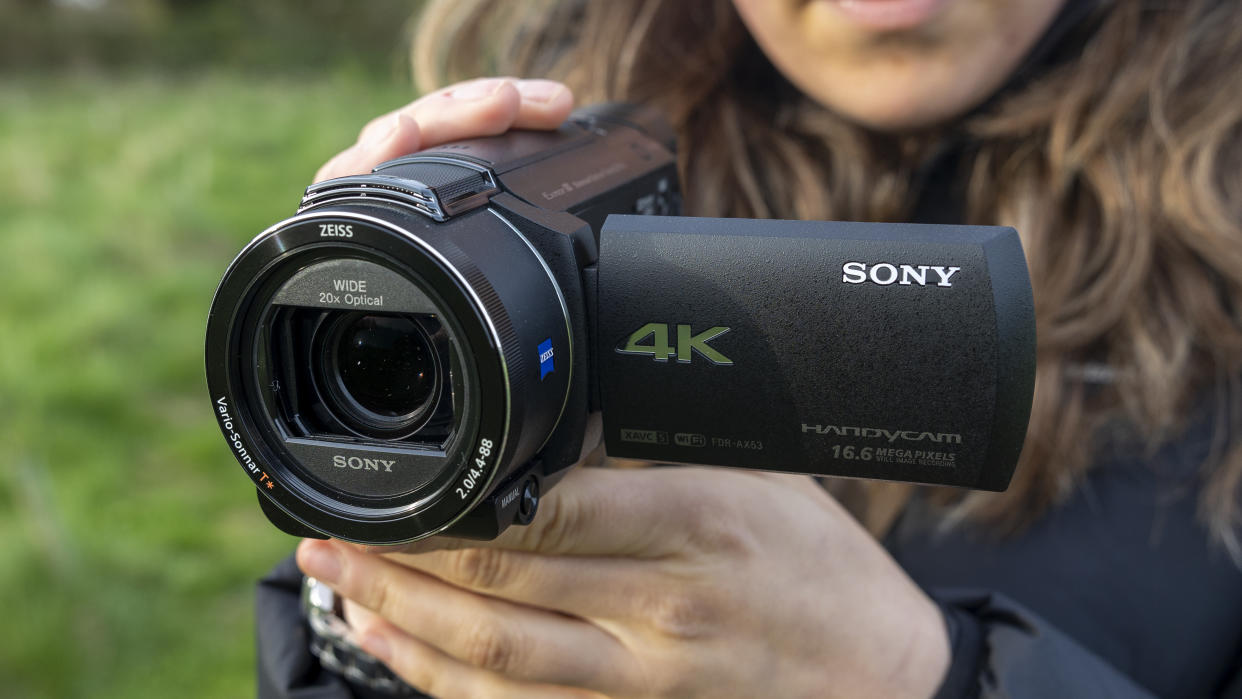
The best camcorders are something of an anachronism in today's market. Yet, their barrel-shaped handheld format, built-in zoom lenses, and ability to get going with minimal setup see them continuing to be popular with a certain type of buyer. If you're an enthusiast looking for something that can shoot decent, stable 4K video out of the box then the Sony FDR-AX53 makes some sense.
It makes even more sense if you're looking for good value, want to upgrade from a smartphone, and don't need or understand the features, codecs, and interchangeable lenses offered by the best cinema cameras.
The Sony FDR-AX53 4K Handycam was released in 2016 when the best phones for video recording were nothing like the conte-creating flagship devices they are today. Designed to offer high-quality 4K video to families and enthusiasts, it reflected the idea that 4K content was becoming more mainstream in the homes of enthusiast consumers.
Sony's mirrorless camera lineup is comprehensive, with advanced hybrid cameras catering to professional creators and the Z lineup leaning towards vloggers. So where do its remaining camcorders fit in for recording video? The FDR-AX53 is ideal for family users with more to spend or filmmakers on a budget. It's around three times the price of the entry-level Sony HDR-CX405, but half the cost of the Sony FDR-AX700 with its larger 1-inch sensor and phase-detect autofocusing system.
Sony FDR-AX53: Specifications
Max resolution: 3840 x 2160 px
Sensor: 1/2.5-inch type back-illuminated
Total pixels: 8.29 MP
Zoom: 20x optical
Memory type: SD/SDHC/SDHX
Dimensions: 73 x 81 x 161mm
Weight: 535g
The Sony FDR-AX53's headline specs include UHD 4K video at 24 or 30fps, 1080p 120 fps for slow-motion footage, 16.6MP images, 20x optical zoom, an equivalent of 5-axis Image Stabilization, and a 5.1 channel microphone. You also get a hot shoe mount, but most of the ports feel outdated by today's standards. Despite its age, the AX53 has endured with consumers, and Sony doesn't appear to be stopping production yet.
But how does it compare to a similarly-priced vlog-friendly camera like the Sony ZV-1? Can an eight-year-old camcorder keep up with the AI-powered autofocus of today's best mirrorless cameras? And is it even fair to ask that? As a millennial, I can enjoy the nostalgic format of the Sony AX53 while also questioning who it's suitable for. Here's what I made of it throughout several weeks of testing.
Sony FDR-AX53: What's changed?
Launched in early 2016 alongside the HDR-CX675 and HDR-CX455 camcorders (no longer available), the Sony FDR-AX53 replaced the AX33. Compared to its predecessor, it's capable of smoother footage with Sony's 5-axis Intelligent Active mode and better audio thanks to a new mic structure picking up sound from more directions.
The XA53's back-illuminated sensor also features pixels that are about 1.6x larger than the previous model, which means it should perform better in low light and handle noise better in these scenarios. For handling, the 4K camcorder also has an electronic viewfinder (something you don't get in the cheaper, newer XA43) plus a customizable control ring on the lens that you can assign for focus, zoom, and exposure adjustments.
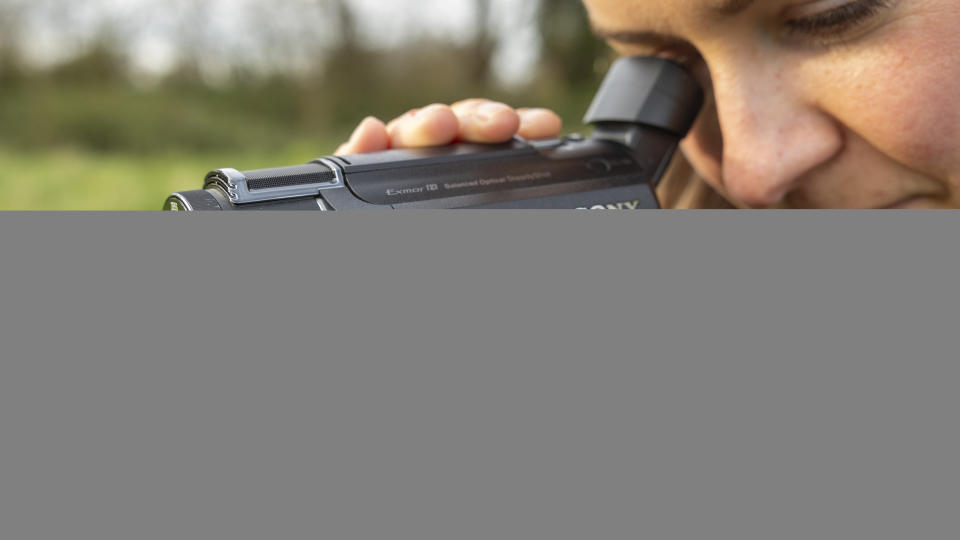
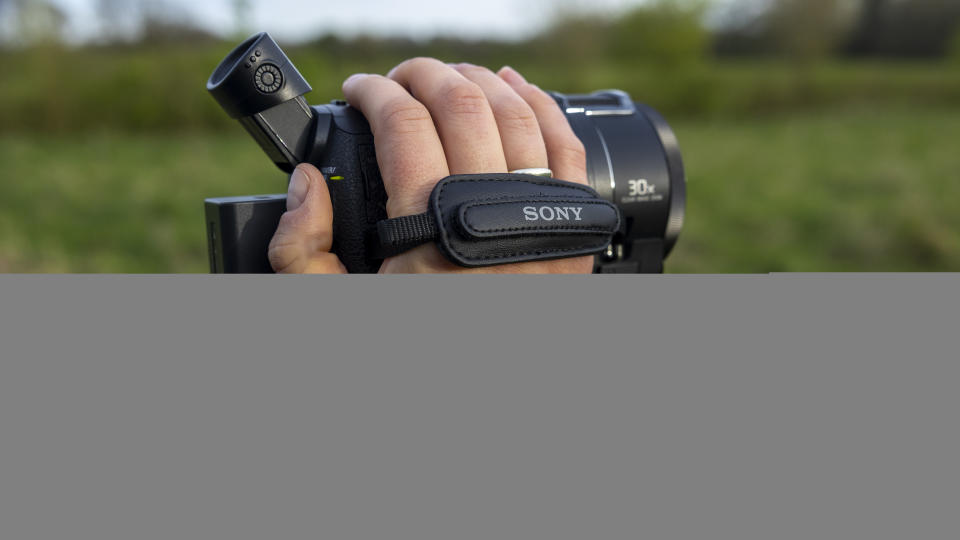
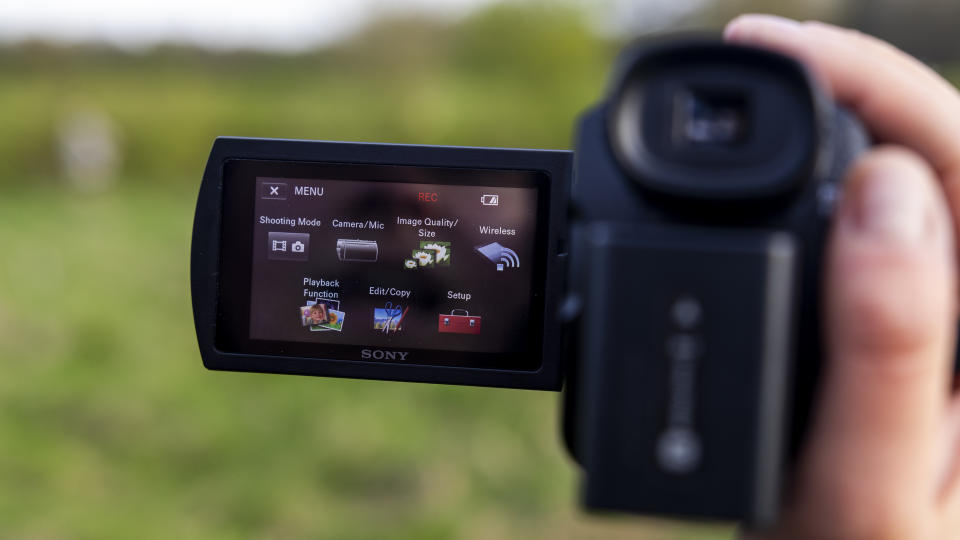
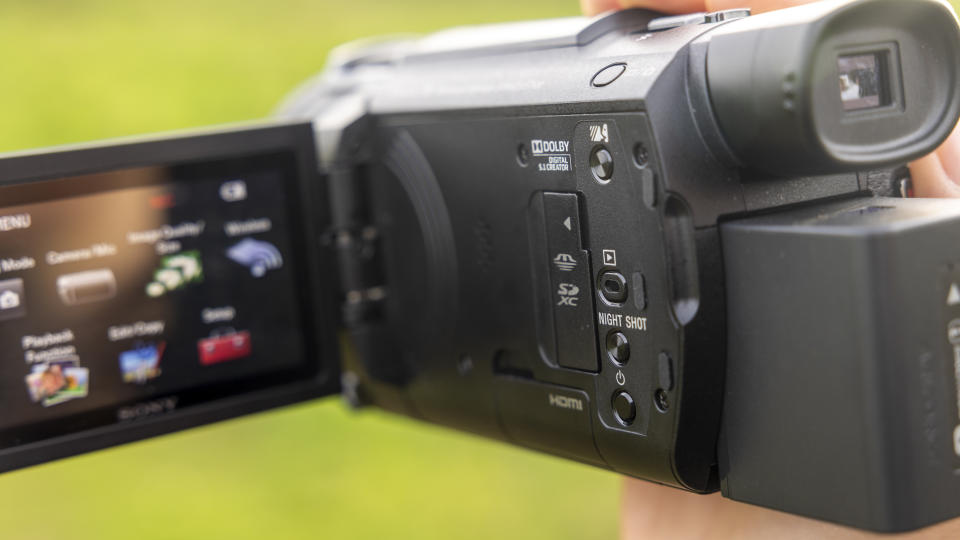
Sony AX53: Design & Handling
I've seen the FDR-AX53 described as having the dimensions of a beer or Coke can, and that's almost accurate, although it's a little longer and fatter. It feels well-built, with no rattling parts, and at just over 500g it's delightful to handhold. A sturdy velcro strap adjusts the grip to accommodate different hand sizes, and there's a standard tripod thread underneath the camera for static, stable footage.
Pulling out the flip-out 3-inch LCD screen or the viewfinder turns the camcorder, and I was impressed at how quickly it fired up and was ready to shoot. The ZEISS Vario-Sonnar T lens is hidden behind an automatic cover that unlocks when it's turned on, so you don't have to remember to open and close it as you do on cheaper camcorders. I can't imagine ever being able to clean the lens effectively, so you better hope that it doesn't pick up any real dirt.
I found the monitor too dim in Normal mode, especially when filming outdoors, but changing it to Bright (there are only two settings) improved the experience. The viewfinder also helped in bright sunshine, but - likely being spoiled by pro DSLRs - it’s small at just 0.6cm. You have to get your eye in just the right position to see it clearly, and it mirrors exactly what’s on the LCD rather than offering anything new.
One of the main distinctions between consumer camcorders and pro models is that they prioritize being easy to use over offering granular controls. The AX53 is designed to be picked up and used in automatic mode, meaning there are very few buttons on the body, save from power, Night Shot, playback, and a feature called "My Voice Canceling" (more on that later) behind the screen on the left-hand side.
There's a button to toggle between video and stills up top (and one to take a photo) and a record button where your thumb naturally rests next to the battery at the back. The ports are sensibly placed, too. The SD card slot sits behind the screen with an HDMI micro port, and headphone and microphone sockets are on the outside so that you can use them with the screen tucked in.
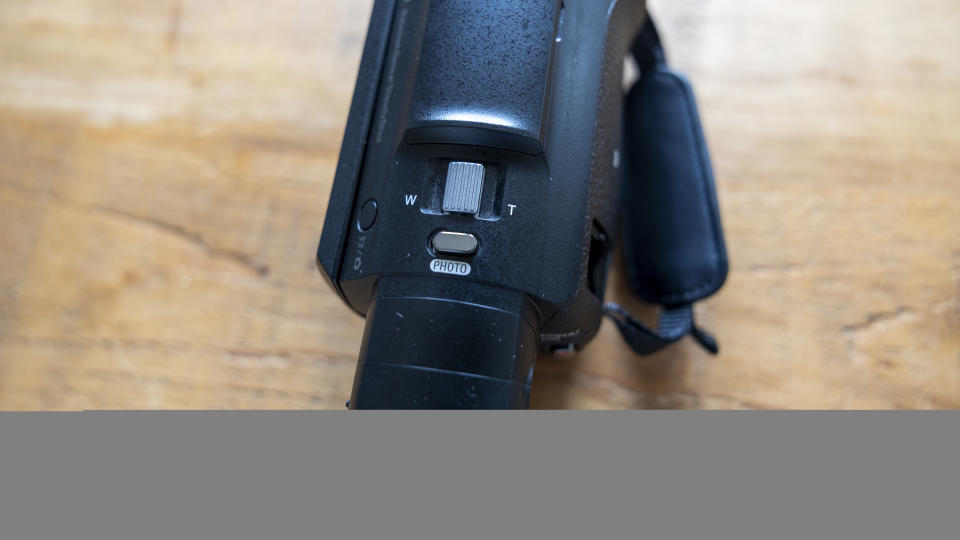
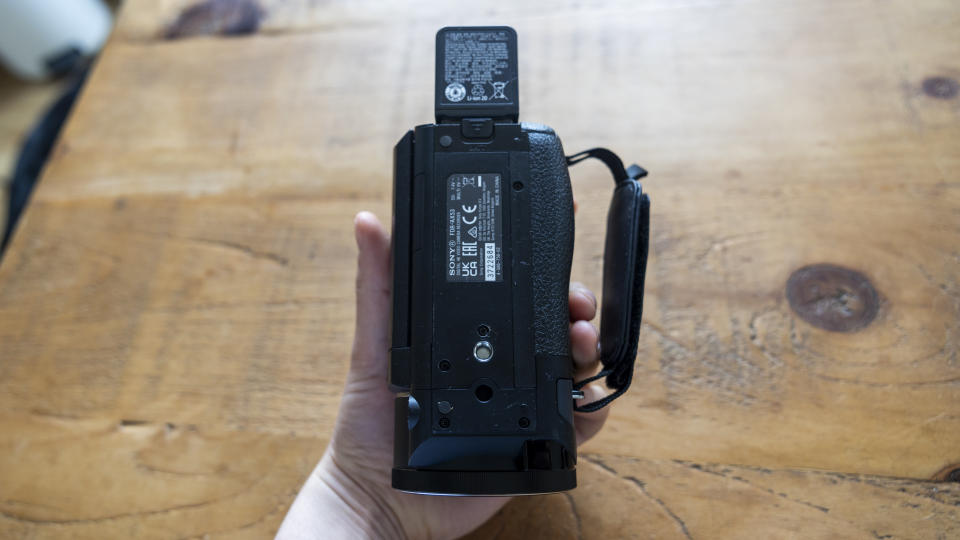
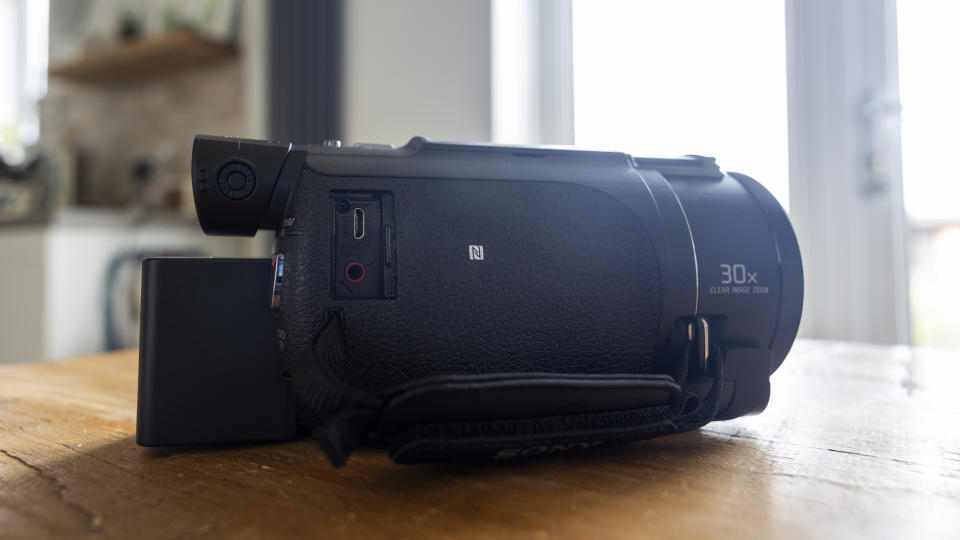
For me what lets this camcorder down is the lack of any assignable buttons; something that I enjoyed when handling the Canon HF G70, and a design choice I think is still valid even for amateur filmmakers. It's hard to see where Sony would have added these custom buttons onto the body, but I feel they'd have sped up operation and taken away some of the fiddly menu navigation I experienced when changing settings like white balance (which I avoided, for this reason) on the screen.
The XA53’s interface is, to put it politely, clunky, as you might expect from a 2016 camcorder. The menu is accessed with a tap on the LCD screen, and it’s split into sections like Shooting Mode, Image Quality, and Playback. Generally, each section has a sensible label, although you’ll find all the manual shooting settings under the generic Camera/Mic. There are six submenus here, but they all appear on the screen, giving you over 30 to move through.
Thankfully, the LCD is touch-sensitive, but modern scroll and swipe gestures don’t work and you have to tap the up and down arrows to move through each parameter. It’s not ideal, particularly when you’ve gotten used to the speed of smartphone apps or the fluidity of modern camera interfaces. But it’s not a dealbreaker either, especially if you’re going to stick to the camera’s automatic settings.
What Sony has done is made the AX53’s lens ring function customizable. It’s set to Zoom by default but you can assign it to Exposure, Shutter Speed, AE Shift, and White Balance Shift. Pressing the manual button under the lens on the left (for a few seconds) brings up the functions on the screen, and then you twist the lens and press Menu again to set it. All of this takes longer than it should, and that means you won’t want to swap modes too often.
Sony FDR-AX53: Performance
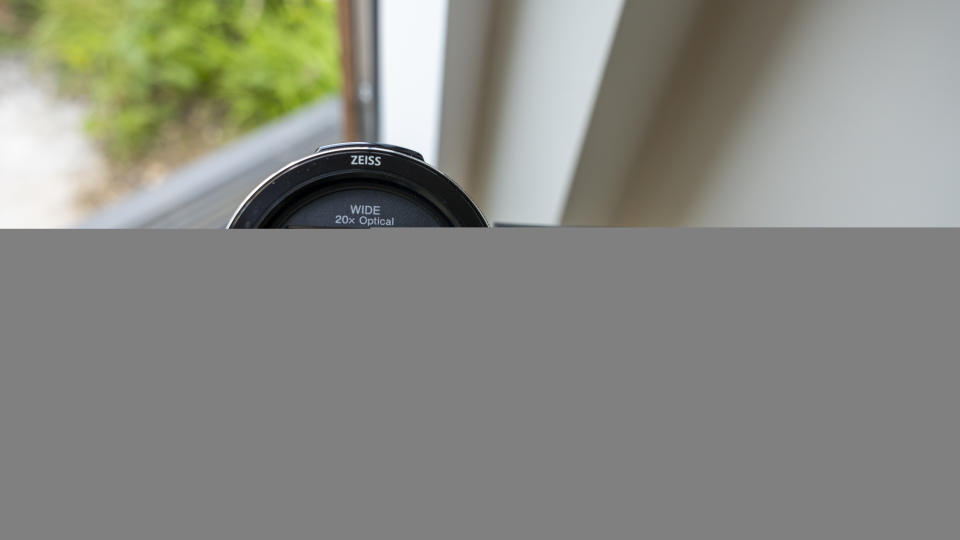
I’ve tested six camcorders in as many months, and I’m probably most impressed by the footage from the Sony FDR-XA53 – despite its average specs and features. I’m not saying it’s technically the best, but it performs admirably for its price bracket, age, and my expectations. The XA53’s 1/2.5-type sensor is back-illuminated, with larger pixels for improved low-light handling.
I shot footage at sunset and night, and there was no evidence of the muddy details and dull colors I experienced with the XA45. When shooting at the highest 4K 100mbps in bright daylight, the tonal range and clarity blew me away, and at least matched the more expensive Canon GH70.
I kept things largely in automatic mode, letting the camcorder choose settings for me. Great move. When recording videos to the camera, my skin tones were smooth and natural, and the Face Detection features did a great job of following my face in sharp focus around the frame.
In outdoor shots, the greens were vivid and accurate, and the out-of-focus areas in front of and behind subjects at the long zoom range were impressive for a sensor of “children’s cute sleeping faces” (Sony’s words) or in my case, nocturnal wildlife visiting the garden. It does what it’s meant to, even if it does have a slight green tinge to it.
The widest angle is equivalent to 26.8mm, which is ideal for vlogging at arm’s length. While the 20x optical zoom let me get up close to springtime lambs several fields away. I can see it being seriously impressive for sports games or your kid's graduation ceremonies. While the digital zoom can reach 250x, I wouldn’t rely on this unless you’re not precious about image quality – given that it seriously degrades the picture beyond about 50x.
The lens is floating on a gimbal inside the camcorder, which helps with stability. The AX53’s (5-axis) stabilization compensates for vibration across five directions. While Sony says it’ll stop camera shake even while running, I’d say you’d have to be a very smooth runner for this to be true. I was able to walk fast on uneven ground and capture usable footage, while vlogging was very static with no distracting movements.
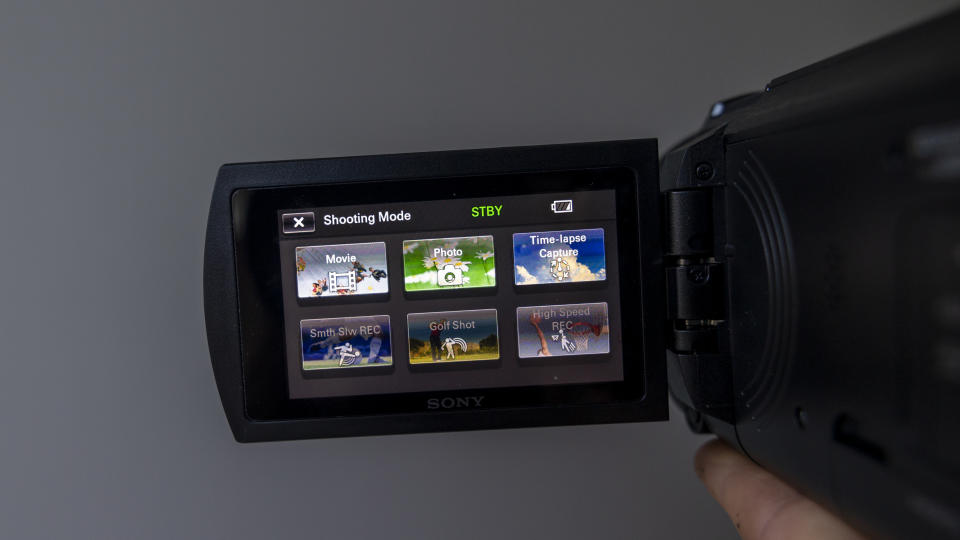
I’ve already talked about the fiddly lens ring, but it's possible to control the Sony FDR-AX53 remotely with a smartphone (or tablet) by downloading the Imaging Edge Mobile app. Within a few minutes, I'd paired the camera to my iPhone 15 and could start and stop recording, view the picture, and zoom in and out from a distance. This was perfect for moments when I didn't want to be in a shot and would be just as helpful for being in group shots with the camera on a tripod. Multi Camera Control means you can join several camcorders via Wi-Fi, but I didn’t get a chance to test this feature.
Sony’s XA53 battery lasted me around two hours of 4K recording, plus some menu faffing time on top of that. That’s a lot more than the Canon HF G70 and a great deal longer than the Sony ZV-1 vlogging camera. Once you’re out of power though, charging takes over three hours to get back to full capacity.
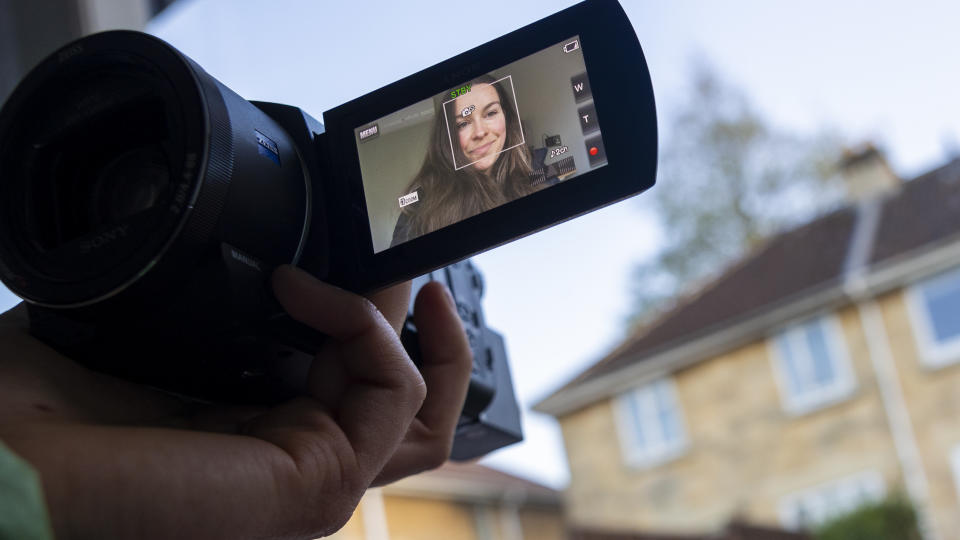
The audio quality could be better. The XA53 comes with a built-in 5.1 channel microphone, but this is sadly limited to stereo (2 channels) in 4K. Still, it offered brilliant clarity when I recorded pieces to the camera in a home studio. When filming in a city it picked up ambient noise from multiple directions and could distinguish between vehicles, people talking, and music in the distant background.
Windy conditions caused a lot of noise disturbance (despite the Auto wind reduction being activated) but that’s not unusual for a built-in mic. I’d suggest adding an external shotgun mic for the best audio, which you can do without spending much extra or weighing yourself down.
If there’s any area of disappointment then it’s undoubtedly autofocus performance. Nine years is a long time in technological terms, and the AX53’s AF system can’t keep up with fast-moving subjects or rapid changes in zoom in the way that its latest AI-powered systems can. I always found myself zooming in and out gradually, rather than all at once, otherwise the camcorder would take a while to refocus properly.
And if you're a videographer or a filmmaker who likes control, you won't get it here. You can only turn off one automatic feature at a time, and all the features you've set manually then revert to full auto. Add that to the lack of customizable buttons, and it's a frustrating experience for more advanced users.
Sony FDR-AX53: Sample video
Above: sample video show with Sony AX53
I had the Sony FDR-AX53 for several weeks and created dozens of short clips of everyday life (because that's what the camcorder is designed for). I captured footage inside and out, in low light and under LEDs. All the shots were captured handheld, relying on the FDR-AX53's microphone. These clips were shot at the maximum XAVC S 4K output (3840 x 2160 px).
Sony FDR-AX53: Final Verdict
If you're looking for a family-friendly camcorder that's easy enough to be used by most ages and skill levels, the Sony FDR-AX53 is a winner. It's bigger than the most compact of Sony's camcorders, the HDR-CX405, but still portable enough to pop in a bag. It's also very comfortable to carry around, and the built-in stabilization does a good job of keeping your wobbly walking shots steady. What it doesn't give you is the manual control over settings you'll need for professional work and documentaries.
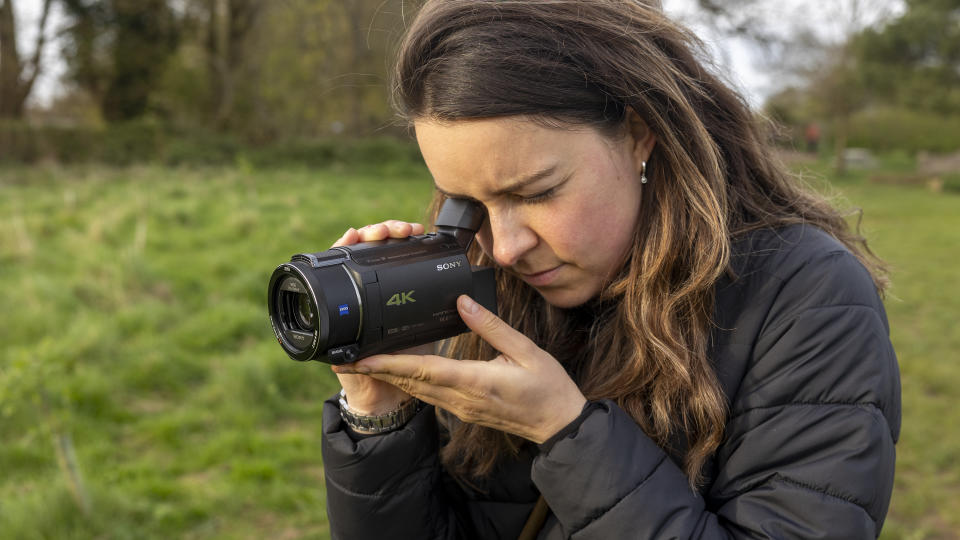
Still, despite having a pro-level mirrorless camera with great video specs, I preferred using the FDR-AX53 for capturing footage on the fly, because of its light, one-handed handling. Although the viewfinder is a bonus in a camera of this price bracket, I preferred having the camcorder at a lower angle and using the monitor for composition and checking the audio.
The FDR-AX53 is also a good choice for film students, who want to create projects on a budget. But it's nothing like Sony's latest vlogging lineup, and although you get Wi-Fi to send clips to your phone, the process is more labored than I'd have liked. Of course, you also can't change the lens, which would be a great limitation if the wide-angle and 20x optical zoom offered didn't cover most scenarios effectively.
The Sony FDR-AX53 is a decent generalist camcorder for everyday clips but the autofocus technology is outdated. You'll notice this when zooming in and out quickly and in high-contrast lighting situations, but unless you expect it to be as zippy as the AI-powered AF on the best Sony cameras, you'll be satisfied.
Should you buy the Sony FDR-AX53?
✅ Buy this if...
You want a reliable, portable camcorder with a versatile zoom range.
You're not bothered by retro menus.
You want minimal manual controls over your video settings.
🚫 Don't buy this if...
You want the latest autofocus tech for fast-moving subjects and people.
You want a big, bright viewfinder.
You want to get into pro videography; it won't grow with you.
Alternatives

If you're after a camcorder for semi-professional use, the Canon HF G70 is more advanced and costs a couple hundred more than the XA53. You get the same 20x optical zoom, but an additional SD card slot, more customizable buttons, a larger 3.5-inch LCD, and built-in ND filters.

If you're flexible on the camcorder format, the 4K Sony ZV-E10 is more modern and lightweight than the FDR-AX53. It's ideal for vlogging and better if you enjoy stills photography too, similarly priced with the 16-50mm kit lens. Of course, you lose the 20x built-in optical zoom.

